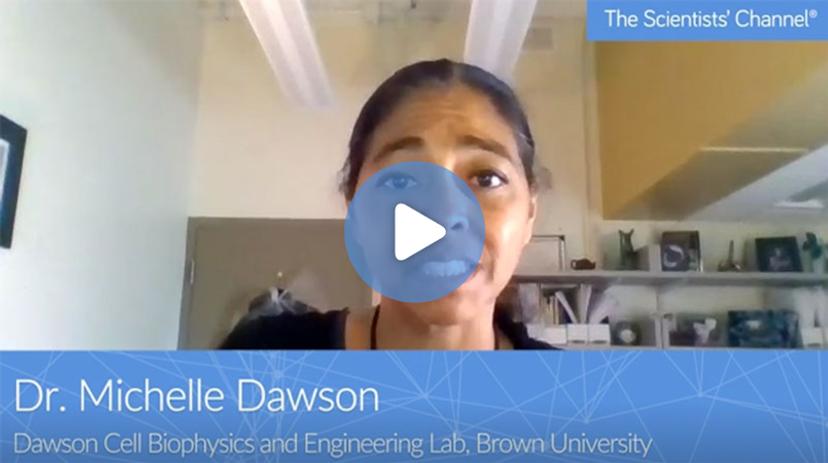Unraveling the mysteries of cancer cell metabolism
We hear from Brown University’s Dr. Michelle Dawson on why a fail-safe incubator is crucial for cell culture studies in cancer research
10 Nov 2021

Cells hidden within tumor microenvironments may be vital in developing new approaches to cancer therapies. Polyploid giant cancer cells (PGCCs) found within tumors have not traditionally been a focus of research, but new findings suggest that understanding how these cells interact may be vital in understanding and treating invasive cancers.
In this SelectScience® article, Dr. Michelle Dawson, Assistant Professor of Molecular Pharmacology, Physiology and Biotechnology at Brown University, shares her research on cell metabolism and interactions and outlines how a deeper understanding of cells can contribute to the treatment of cancers. Dawson also highlights the importance of reliable CO2 incubators in providing a controlled in-vitro environment for growing tissue cell cultures and in ensuring the safety of researchers.
Tell us a bit about yourself and your role at Brown University
MD: I am an assistant professor at Brown University and work in the Dawson lab studying cancer research. The Dawson lab is focused on single-cell biophysical analysis of cancer cells and stromal cells that exist in tumor microenvironments. These cells interact either through direct contact or through soluble factors that are exchanged between cells. Understanding how those factors individually, or together, contribute to the development of cancers is critical in being able to come up with new approaches to treatments.
What is your current research focus?
MD: One project is focused on tumor organoids. These are multicellular structures that develop over four to six weeks. This is enough time for the cells to undergo many changes, such as changes in their cell metabolism. Metabolism allows cells to take small molecules and convert them to energy. And so, metabolism describes energy processes that these cells use to be able to develop the types of invasive behaviors that we're interested in studying. Therefore, understanding cell metabolism is critical in being able to understand how these cells can become cancerous and thus enabling the development of more targeted treatments.
Another project is focused on polyploid giant cancer cells. These are giant cells that have high DNA content. They exist as small subpopulations of every tumor microenvironment. Since these cells exist within the tumors, people have ignored them in the past, but what we found is that these cells can awaken and go from being dormant to being cells that can potentially cause the progression of cancer.
These cells undergo unusual forms of replication, where they replicate through amitotic division. Although they're not mitotic cancer cells or cells that can divide in the traditional sense, they can form new cancer cells, and those cells can undergo normal division. Once people realized they could undergo this process, they became much more important. In the 3D model, where we look at the way the cells interact over time, we're able to track populations of PGCCs and understand how they escaped dormancy to form the cells that can give rise to invasive cancers.
What equipment do you use when growing cultures for these studies?
MD: We use the In-VitroCell™ ES NU-5710 Direct Heat CO2 Incubator, which includes an automated system for switching carbon dioxide tanks. This system is great because it gives us a sense of security that it won't fail when we're outside of the lab, due to its stability and ability to automatically switch the CO2 tank so that we have continuous CO2 delivery.
This incubator also features an alarm system that allows me to determine whether there's something wrong with the incubator stack outside of the CO2 gas. With this, we can keep our cultures without fearing that we would lose them at a late stage. Since we have long-term cultures, if we did lose cultures at a late stage, we would lose that whole experimental time. And so, it's critical to have a system that we can count on like the In-VitroCell™ ES NU-5710 Direct Heat CO2 Incubator.
How important is biosafety in your research?
MD: Biosafety is critical in a research lab. We work with a lot of different reagents that pose different types of hazards to the researchers. We review material safety data sheets, and sometimes we find out that something that we thought was completely without harm, could potentially have hazards. Understanding hazards in the lab and how those hazards could affect the researchers that are doing the work is critical to ensuring sure that you can continue doing the research that could potentially save lives.
What do you see for the future of your research?
MD: In the future, I'm looking forward to doing animal work to be able to understand how the PGCCs contribute to the progression of cancer in a more complex physiological model. We also hope to use our tumor organoids in vivo, which will give us a new system that will be used to study ovarian cancers.
Don't miss the exclusive video interview on The Scientists' Channel:


